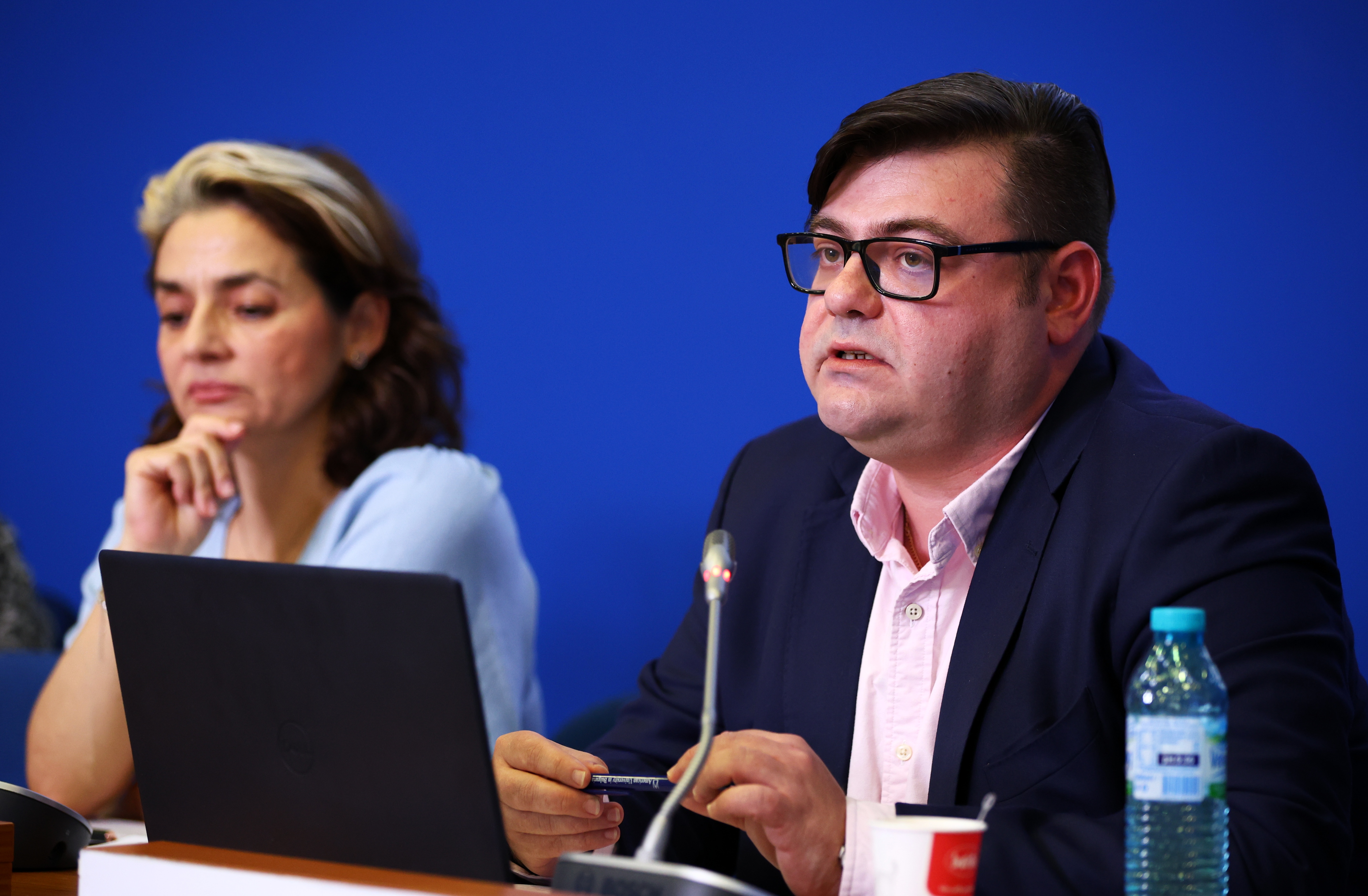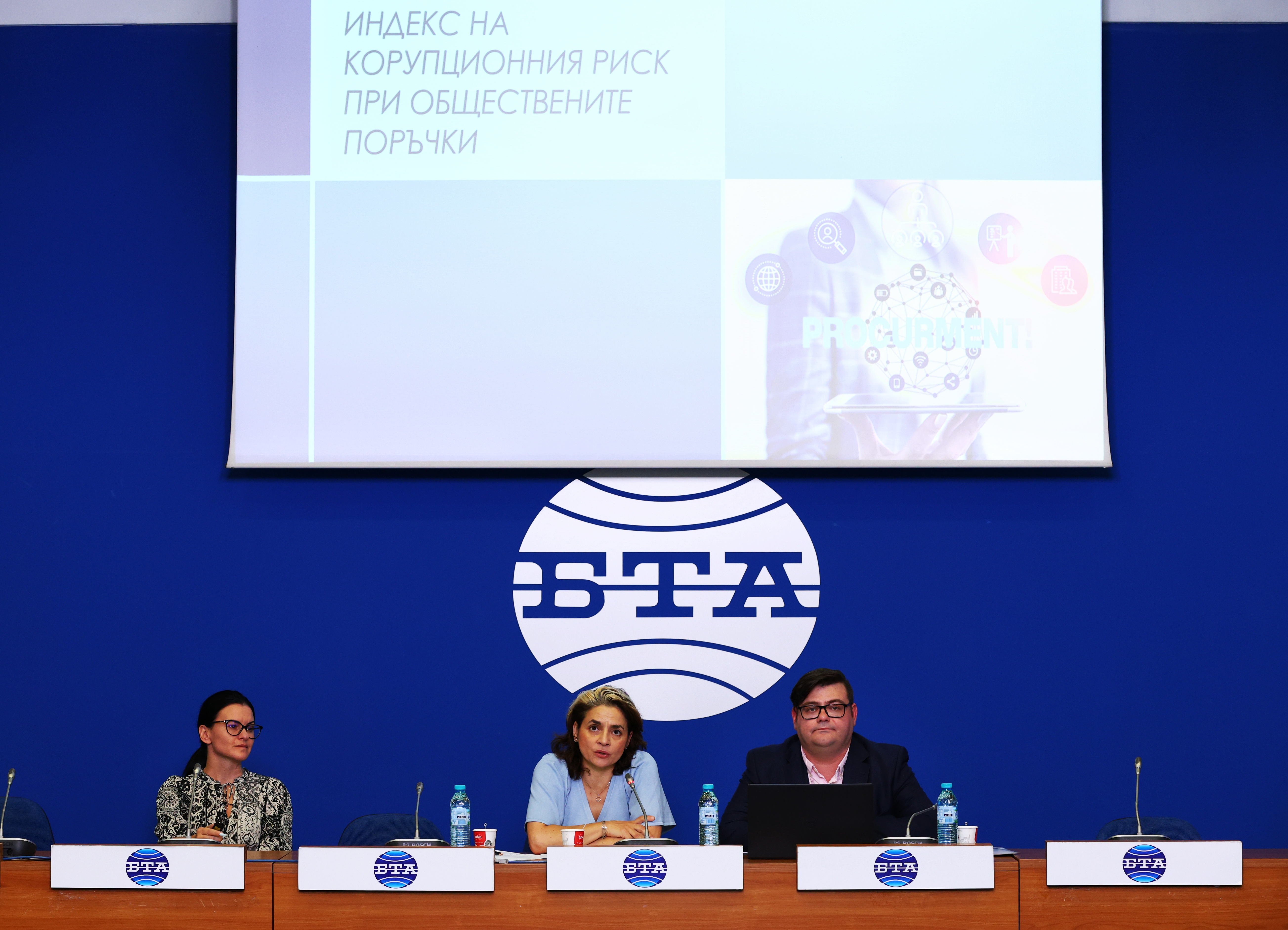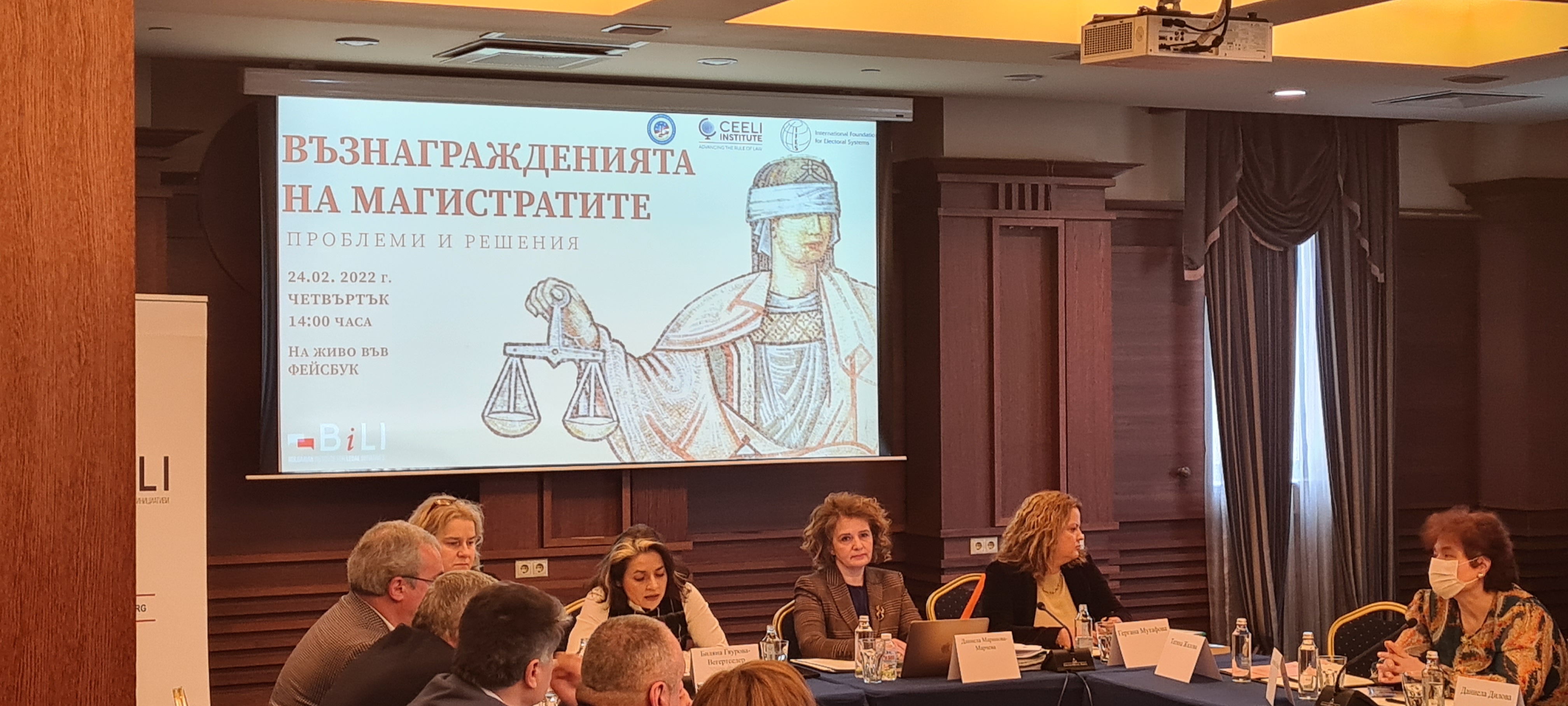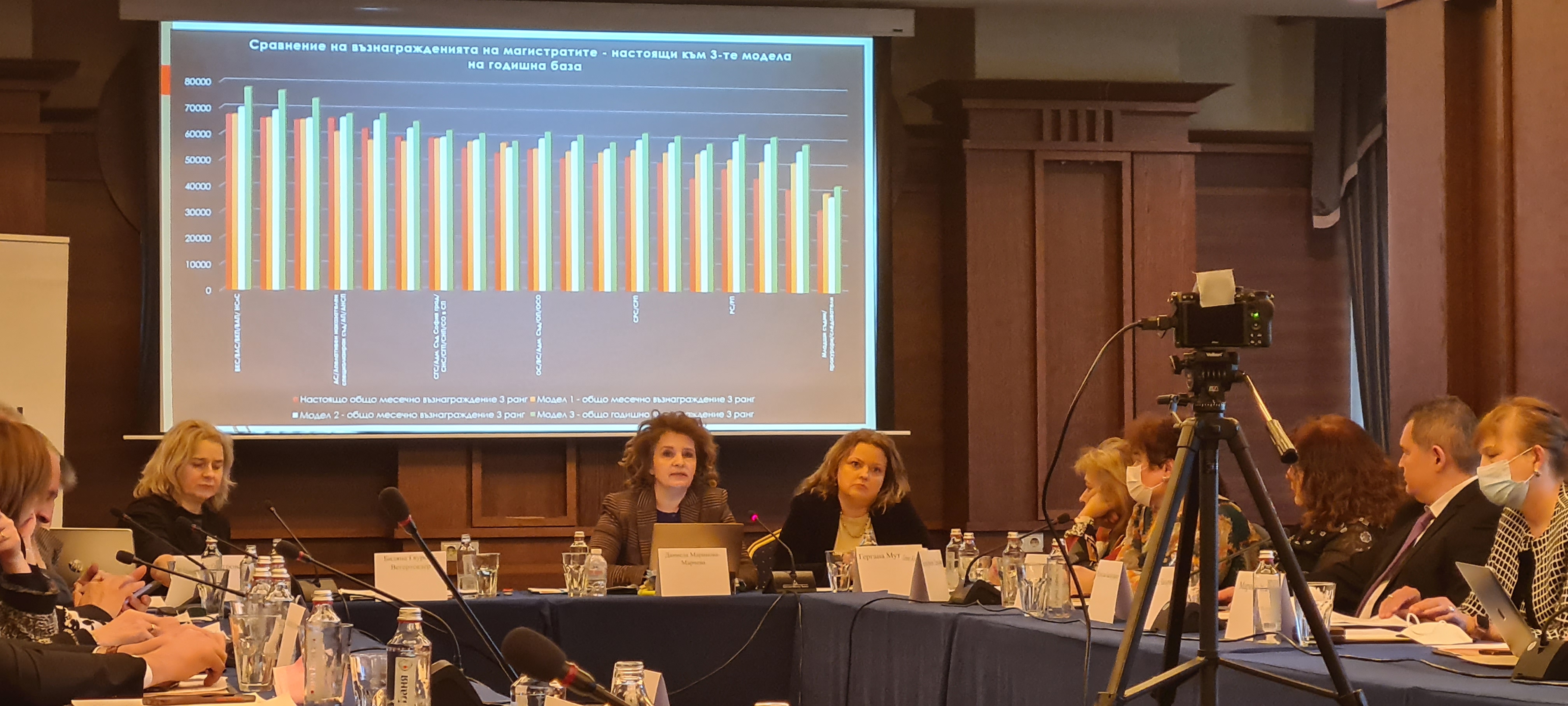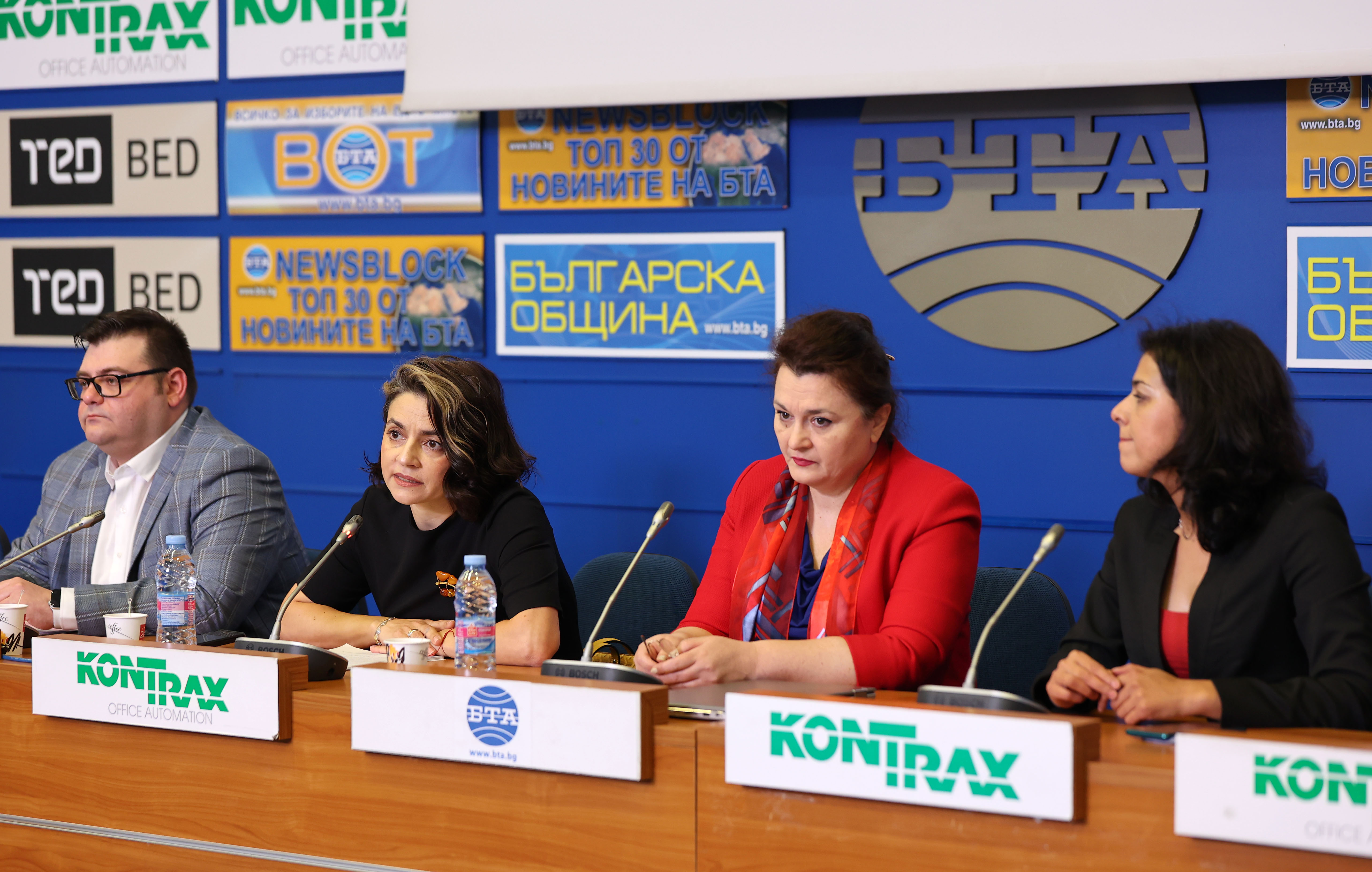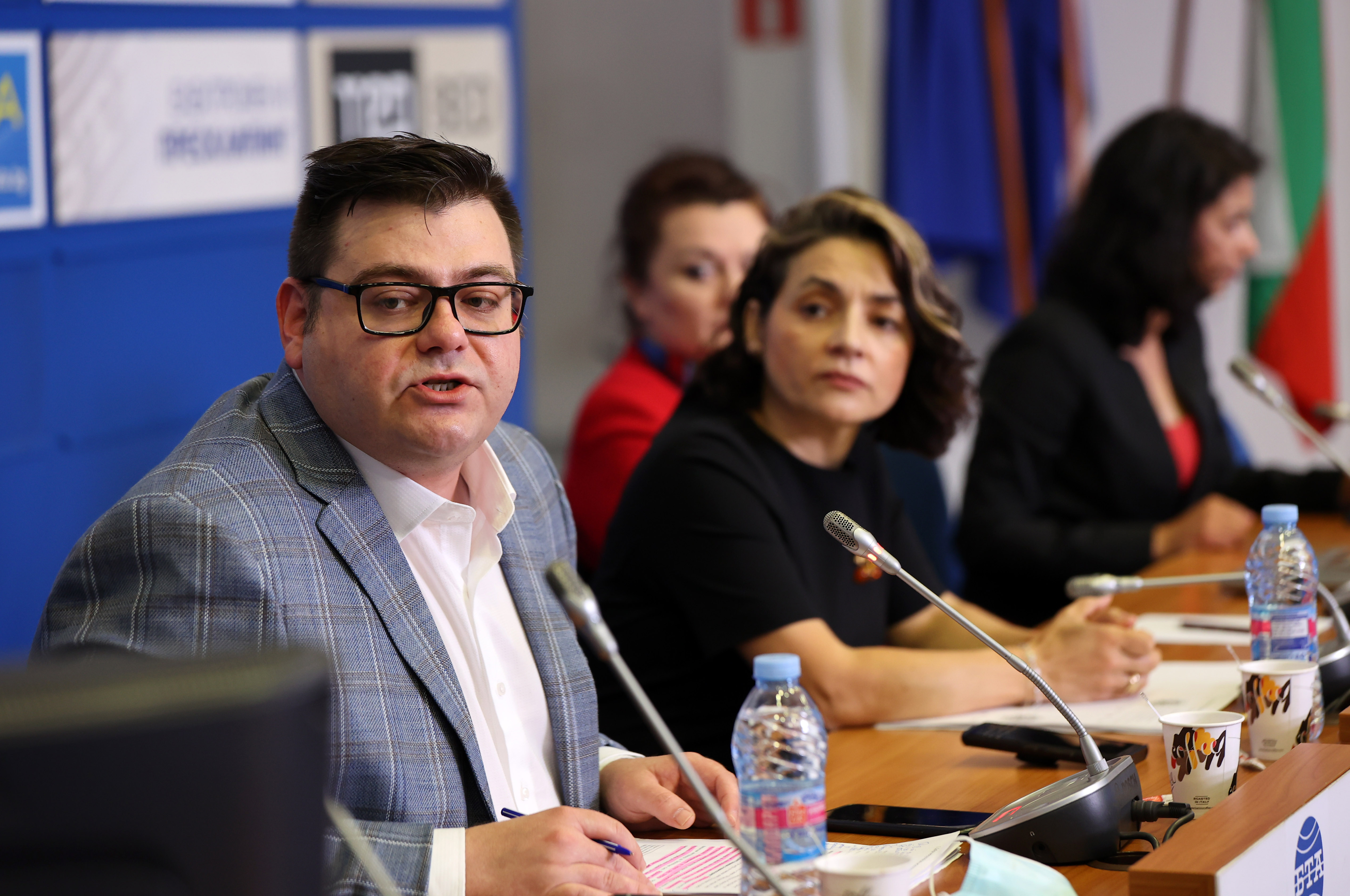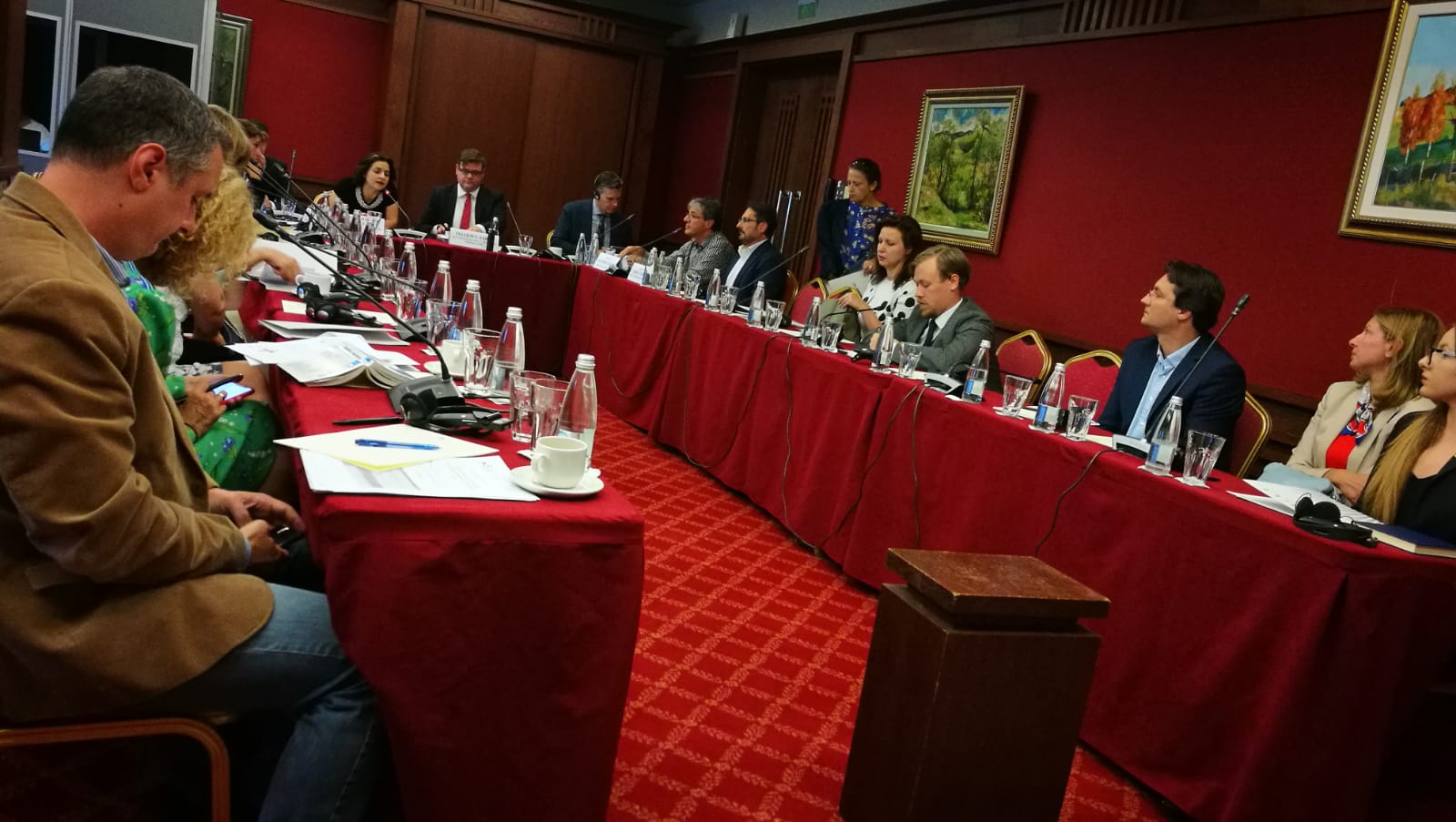Press Conference at the Bulgarian News Agency on the Corruption Risk Index in Public Procurement
On 11 September, the BILI team presented a set of indicators indicating a high risk of corruption in public procurement. These indicators are based on an analysis of the practices of the Supreme Administrative Court, the Commission for Protection of Competition, the Public Financial Inspectorate and the Bulgarian National Audit Office, as well as on recommendations from international organizations. Ms Bilyana Gyaurova-Wegertseder (Director of BILI), Dr Radostina Georgieva (Director of Global Metrix), Dr Teodor Slavev (Project Manager) and lawyer Tsvetomir Todorov (Public Procurement Expert) presented the methodology and structure of the Corruption Risk Index (CRI) in Public Procurement during a press conference at the Bulgarian News Agency.
Pilot testing of the CRI was based on a representative sample of 166 procedures. This sample was randomly selected from a total of 1,224 procedures announced between January 1, 2020, and June 30, 2023, related to construction works with a total estimated value of 2.73 billion BGN. The analysis focused on the procurement of construction works by district centers across the country. Due to the representative nature of the sample, the results can be generalized to all construction contracts awarded by the 28 district centers in Bulgaria through the Central
ised Automated Information System "Electronic Public Procurement" (CAIS EOP). The sampled procedures represent a total value of BGN 259.9 million. The data were presented by Dr. Radostina Angelova.
According to Dr. Angelova, the index value of 23.75% indicates that a significant portion of public procurement procedures deviated from legal prescriptions. She noted that this is a serious indication of problems and irregularities in the procurement process. Dr. Angelova explained that the index ranges from 0% to 100%, with 0% representing the ideal condition where there is no risk of subjectivism or corrupt practices, and 100% representing the theoretical maximum of such risk. She also mentioned that the index could vary when applied to different periods and across different contracting authorities. Experts have identified two types of malicious practices most prevalent in public procurement within the construction sector. Dr. Teodor Slavev, Project Manager for Bulgaria, explained that 60% of announced procurements result in only one submission, often due to a lack of competition or the elimination of other bidders. According to him, this situation significantly reduces competition and the opportunity for fair bidding.
Dr. Slavev also stated that the Public Procurement Agency reports on public contracting authorities that have signed contracts based on only one tender. In smaller municipalities such as Gramada, Brusartsi, 100% of all public contracts for the first half of this year were awarded based on a single bid. In Sofia, the percentage is 22.86%, in Plovdiv – 47.75%, in Varna – 58.33%, and in Burgas – 77.92%. Out of 308 procedures, 240 contracts were concluded on the basis of only one bid.
Among the summarized bad practices, some are classified as “The Cup and Ball Trick,” where the contracting authority fails to upload all the necessary documentation for public procurement. In such cases, often only the technical specification is published, while the selection protocol and evaluation methodology are missing. Another bad practice is the "Each To His Own" approach, where the criteria set for contractors allow for subjectivity in the interpretation of performance or in proving the compatibility conditions of the candidates or the requirements of the technical proposal.
On 11 September, the BILI team presented a set of indicators indicating a high risk of corruption in public procurement. These indicators are based on an analysis of the practices of the Supreme Administrative Court, the Commission for Protection of Competition, the Public Financial Inspectorate and the Bulgarian National Audit Office, as well as on recommendations from international organizations. Ms Bilyana Gyaurova-Wegertseder (Director of BILI), Dr Radostina Georgieva (Director of Global Metrix), Dr Teodor Slavev (Project Manager) and lawyer Tsvetomir Todorov (Public Procurement Expert) presented the methodology and structure of the Corruption Risk Index (CRI) in Public Procurement during a press conference at the Bulgarian News Agency.
Pilot testing of the CRI was based on a representative sample of 166 procedures. This sample was randomly selected from a total of 1,224 procedures announced between January 1, 2020, and June 30, 2023, related to construction works with a total estimated value of 2.73 billion BGN. The analysis focused on the procurement of construction works by district centers across the country. Due to the representative nature of the sample, the results can be generalized to all construction contracts awarded by the 28 district centers in Bulgaria through the Central
ised Automated Information System "Electronic Public Procurement" (CAIS EOP). The sampled procedures represent a total value of BGN 259.9 million. The data were presented by Dr. Radostina Angelova.
According to Dr. Angelova, the index value of 23.75% indicates that a significant portion of public procurement procedures deviated from legal prescriptions. She noted that this is a serious indication of problems and irregularities in the procurement process. Dr. Angelova explained that the index ranges from 0% to 100%, with 0% representing the ideal condition where there is no risk of subjectivism or corrupt practices, and 100% representing the theoretical maximum of such risk. She also mentioned that the index could vary when applied to different periods and across different contracting authorities. Experts have identified two types of malicious practices most prevalent in public procurement within the construction sector. Dr. Teodor Slavev, Project Manager for Bulgaria, explained that 60% of announced procurements result in only one submission, often due to a lack of competition or the elimination of other bidders. According to him, this situation significantly reduces competition and the opportunity for fair bidding.
Dr. Slavev also stated that the Public Procurement Agency reports on public contracting authorities that have signed contracts based on only one tender. In smaller municipalities such as Gramada, Brusartsi, 100% of all public contracts for the first half of this year were awarded based on a single bid. In Sofia, the percentage is 22.86%, in Plovdiv – 47.75%, in Varna – 58.33%, and in Burgas – 77.92%. Out of 308 procedures, 240 contracts were concluded on the basis of only one bid.
Among the summarized bad practices, some are classified as “The Cup and Ball Trick,” where the contracting authority fails to upload all the necessary documentation for public procurement. In such cases, often only the technical specification is published, while the selection protocol and evaluation methodology are missing. Another bad practice is the "Each To His Own" approach, where the criteria set for contractors allow for subjectivity in the interpretation of performance or in proving the compatibility conditions of the candidates or the requirements of the technical proposal.


